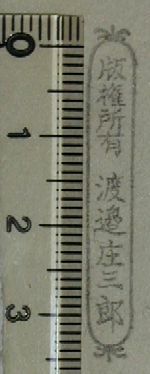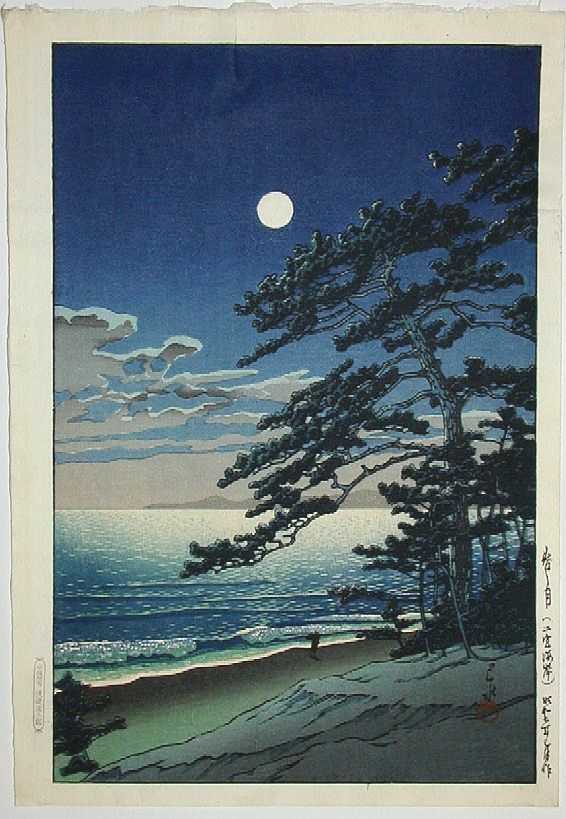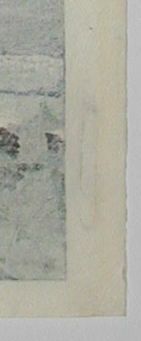
Faking pieces of art is as old as the art world itself. This applies to Japanese prints as well, be it old "ukiyo-e" prints from the 1700-1800's, or as we have found out recently, faked seals on "shin-hanga" prints of the 1900's. In the field of shin-hanga -- and of course also for other prints -- typically "early" or "first editions" are more appreciated and subsequently command higher prices than for later editions or posthumous prints. Particularly, this rule applies for prints published by the Tokyo-based publisher Watanabe. Here, the earliest Watanabe-published editions, made before The Great Kanto Earthquake of 1923, deservedly fetch the highest prices, followed by the pre-War prints with their typical variety of "oblong" Watanabe publisher's seals (which we now assume are known to the readers of this article). Finally, post-War editions of prints from the Watanabe Publishing House bring still lower prices compared with the early versions.
(Before continuing, this discussion again assumes that the reader of this article has some "reasonable knowledge" of the various seals used by Watanabe, along with an understanding of "where and why" these various publisher's seals appearance would be expected to be appropriate. To learn more, please see our reference article titled "Watanabe Publisher Seals." It is further assumed that the reader also realizes that while print's "margin-dating" and "titles" are permanently carved INTO a print's black "key-block," the typically encountered "margin publisher's seals" (as well as "carver/printer seals") are HAND-APPLIED, being added to the print's margins once the printing of a print's many colored blocks has been completed.)
Unfortunately -- and complicating matters somewhat for collectors -- a small portion of the prints published by Watanabe (being mainly Hasui prints) do not carry any publisher's seal. Our considerable experience tells us that, having judged many of these prints from both their paper and condition, many appear to be post-War and are therefore often available at relatively modest prices. As a result, these (unsealed) print's pricing and occasional availability also makes them "inviting and tempting" to shady sellers who may try to increase these print's value by putting an appropriate early "pre-War" (counterfeit) seal onto their empty margin. Additionally it seems, today's digital imaging and printing technology now perhaps makes this deception easier to achieve.
Already in recent years, we have occasionally doubted the "authenticity" of several "old Hasui prints" offered at various Internet auctions, as "things just didn't seem quite right." In several cases, we have observed where a pre-War Watanabe seal (usually the Watanabe "C" seal, or so-called "Sausage-Seal") was seen on a print TOGETHER with a round 6mm seal, which itself is definitely a post-War seal. In another case, an "oblong" Watanabe cartouche was placed onto the verso of the print. "Hmmm.... strange" we thought--but still, it could have been correct. After all, we certainly could not exclude the possibility that a pre-War print with the "oblong" cartouche, which was kept safely by Watanabe during the War, might not also have received an additional 6mm seal at a later date. Similarly, we could also not exclude the possibility that the verso-stamped print, by chance, was carelessly stamped on its reverse side.


